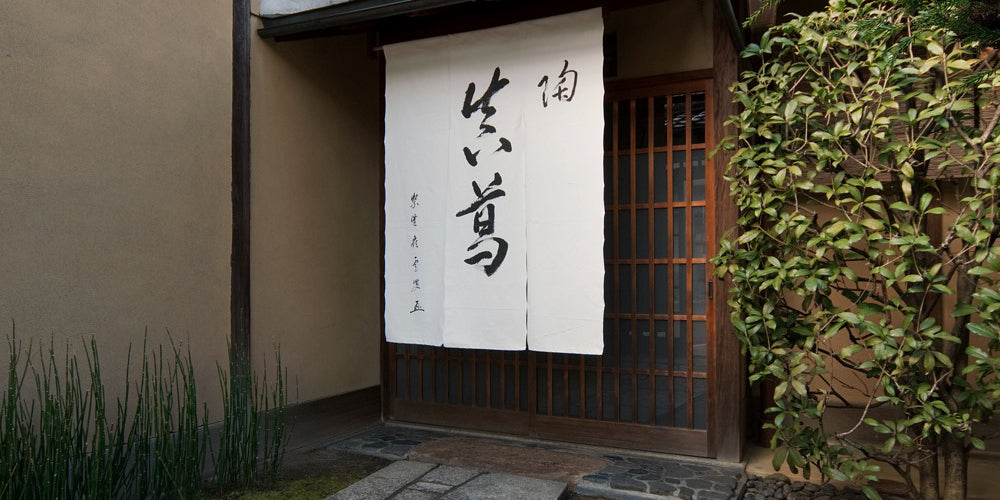
The Makuzu house was founded in the 1680s in Kyōto, just as Kyō-yaki was being developed. Kyō-yaki is known for its original forms and its bright decoration, although there are so many sub-types of Kyō-yaki it is hard to pin down an exact definition.

L: Octagonal Mouth Porcelain Vase with Warabai Glaze, R: Black Glazed Hand-Formed Tea Bowl with Old Pine Tree Decoration
This can be seen in the wide range of items that Makuzu has produced. For example, the vases we feature on our website are made from porcelain, but Makuzu are also famous for their tea-bowls made from Shigaraki clay. Neither porcelain clay nor Shigaraki clay are found near Kyōto, and this shows how Kyōto producers were at a disadvantage compared to other producers, in that they didn't have easy local access to the raw ingredients for their kilns.
However, they were at the centre of Japanese culture and could use their imagination and skill to create new and exciting forms and decoration for their customers.

L: Unglazed Fresh Water Container with stylised Noren decoration, R: Three Friends of Winter (Shochikubai) Sometsuke Tea Bowl
The confines of Kyōto also influenced the firing of their pieces. Using low-temperature kilns and lead glazes was often necessary to reduce fire risk (as had been the same at the founding of the Raku kiln), but this meant that it was easy to experiment with different shapes and glazes in smaller kilns.

High relief saikumono style jar, in the collection of the Victoria & Albert Museum, London,Makuzu Kōzan, 1870s
Later, the Makuzu Kōzan branch of the family established a famous export factory for Satsuma ware in Yokohama. Makuzu ware featured in all the great Japonisme exhibitions and there is a wonderful account of the Emperor himself touching an intricate high relief saikumono vase made by Makuzu Kōzan at the 1877 First Domestic Industrial Exposition (p36 Master Potter of Meiji Japan: Makuzu Kozan (1842-1916) and his workshop Clare Pollard). While undoubtedly technically extremely skilful and impressive (and commercially successful), these saikumono pieces with imaginative relief work were criticised as ostentatious at the time and now seem very much of that time. Kōzan responded by developing porcelains with more subdued delicate glazing for the Western market, but World War 2 saw the destruction of that side of the family.

The enduring appeal of Makuzu ware was reinforced in 2015 when Sen Sōshitsu XV of Uransenke gave a tea ceremony to Prince William at Hamarikyu on 26th February using Makuzu pieces among others.

A close-up view of the Makuzu tea set used for Prince William's tea ceremony

The 6th Makuzu Kōsai, current head of the Makuzu house
If you are interested in Makuzu ware, please do get in touch and we can provide catalogues, pictures and are happy to introduce you to the Makuzu family if you are seriously interested.

